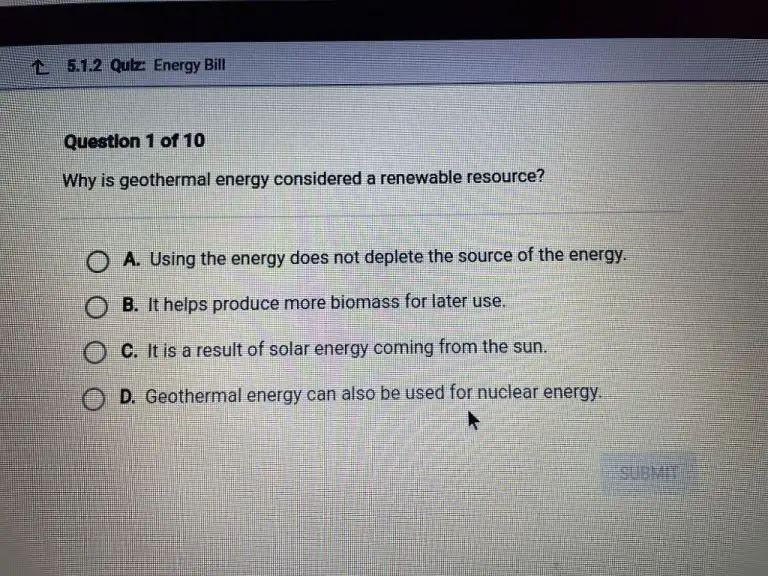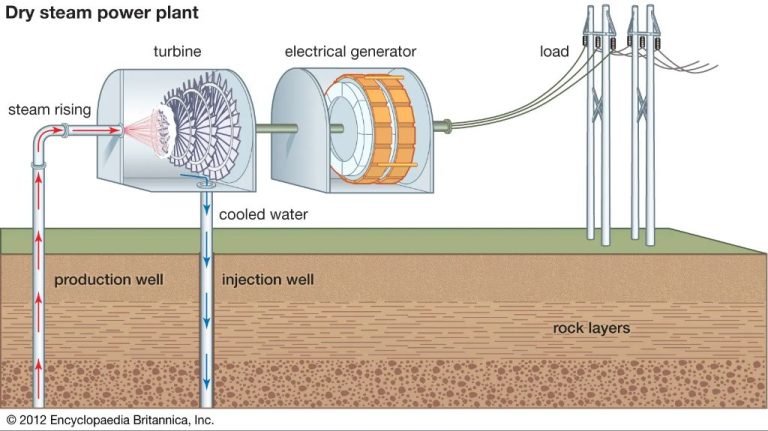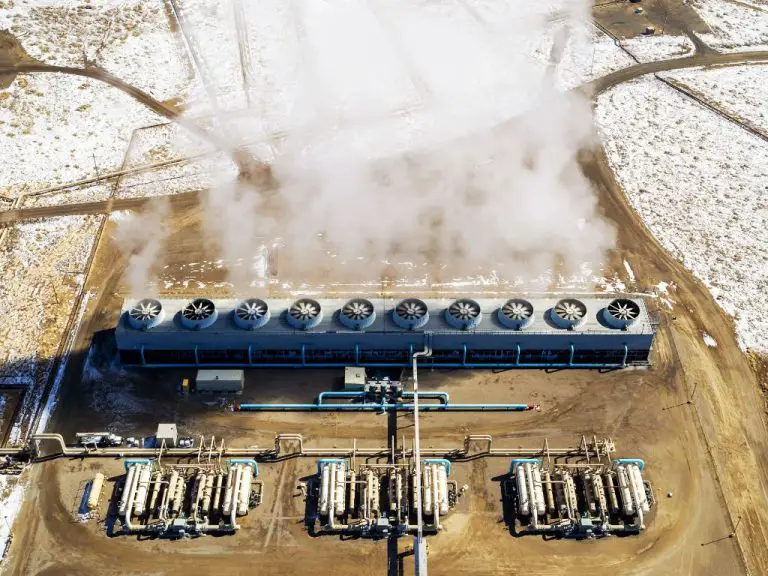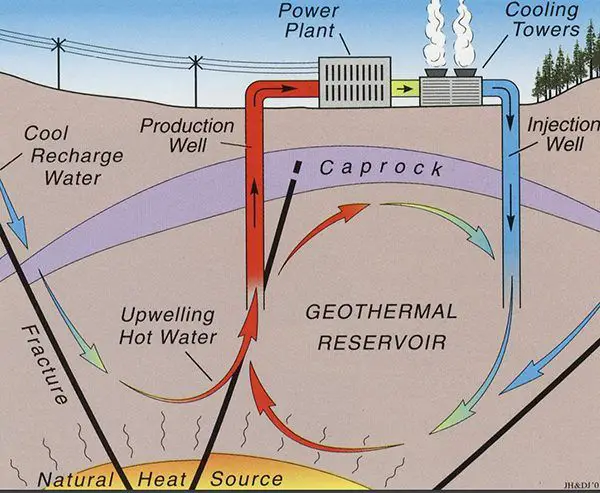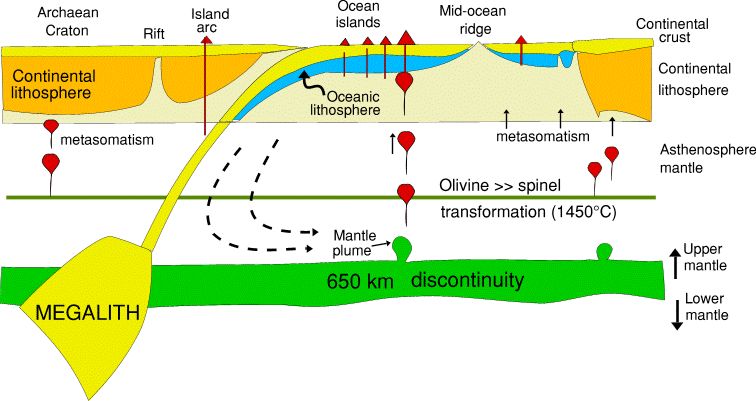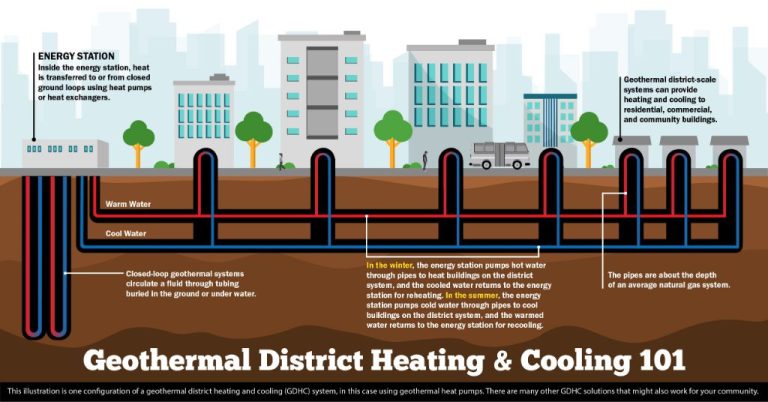How Does A Geothermal Energy Heat Pump Work?
What is a Geothermal Heat Pump?
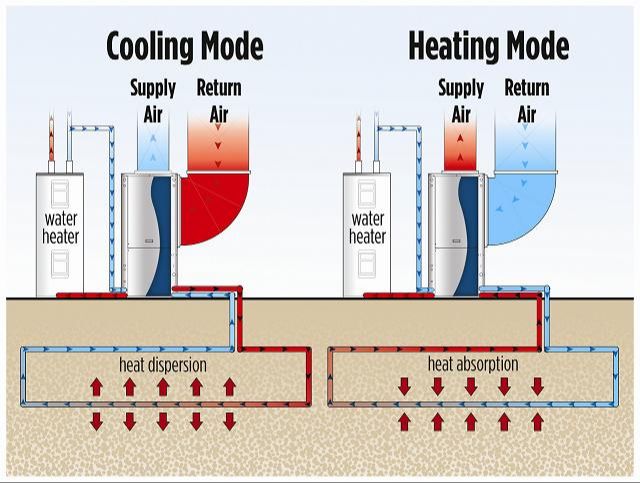
A geothermal heat pump is a heating and cooling system that taps into the natural heat stored underground to provide residential or commercial space conditioning (Energy.gov). It works by circulating water or antifreeze solution through pipes called loops buried underground, either vertically or horizontally. The liquid absorbs heat from the ground and carries it to a heat pump in the building. The heat pump then concentrates the heat and releases it inside the building via a standard duct system.
There are two main types of geothermal heat pump systems: closed loop and open loop. Closed loop systems recirculate liquid through underground pipes, while open loop systems pump water from a well directly to the heat pump (Energy.gov). Both provide an energy-efficient way to harness the Earth’s natural thermal energy for residential and commercial heating and cooling needs.
How Geothermal Energy is Captured
The earth’s crust is made up of several layers, each with varying temperatures. The outermost layer interacts with the atmosphere and is subject to seasonal temperature fluctuations from weather. However, at a depth of around 10-20 feet, the ground reaches a relatively stable temperature, with only minor variation throughout the year [1]. This is known as the geothermal gradient, and is caused by heat from the earth’s core slowly conducting outwards. Typically, temperature increases by about 1°F for every 70 feet in depth [2].
Geothermal heat pump systems take advantage of these constant underground temperatures by circulating fluid through pipes, called loops, buried underground to bring heat to the surface in winter and absorb heat in summer. Only about 4-6 feet of piping depth is needed to reach relatively stable temperatures for residential systems. Vertical loops are typically installed at depths of 100-400 feet for larger commercial buildings [3].
The Heat Exchange Process
The key component of a geothermal heat pump is the heat exchanger, which facilitates the transfer of heat between the refrigerant loop and the ground. The refrigerant loop is a closed loop system that contains a special type of fluid called a refrigerant. As the refrigerant circulates through the loops buried underground, it absorbs or releases heat, allowing the heat pump to provide heating or cooling.
There are three main components in the refrigerant loop that enable the heat exchange process:
- The evaporator – When the system is providing heating, the liquid refrigerant absorbs heat from the ground and evaporates into a gas as it passes through the evaporator.
- The compressor – The gaseous refrigerant is then compressed to raise its temperature even further.
- The condenser – The hot refrigerant gas condenses back into a liquid state as it gives off heat to the home’s distribution system.
During cooling mode, the process is reversed – heat is absorbed from indoors by the refrigerant and transferred to the ground via the buried loops. This repeated evaporation, compression and condensation process allows the geothermal heat pump to efficiently exchange heat with the subterranean environment.
Heating and Cooling Modes
Geothermal heat pumps can provide both heating and cooling by reversing the direction of heat transfer. Here’s how the system works in each mode:
For heating, the heat pump extracts heat from the ground and transfers it indoors. A fluid circulates through underground pipes, absorbing underground heat. This fluid then passes through a heat exchanger inside the heat pump, where its heat is transferred to the indoor air distribution system. The warmed air is circulated through ductwork to heat the interior space.
To provide cooling, the process is reversed. The heat pump moves heat from inside the building and deposits it into the ground. The fluid circulating through the ground loop absorbs the unwanted heat from indoors and carries it outside into the earth, where it can dissipate safely. This cools the indoor air which is circulated back through the ducts.
By simply reversing the flow of heat transfer, the same geothermal system can efficiently heat a space in winter and cool it in summer. This is all controlled automatically by the heat pump unit, which can switch between heating and cooling modes as needed to maintain the desired indoor temperature.
Types of Loop Systems
There are three main types of closed loop systems used in geothermal heat pumps:
Vertical Loops
Vertical loops are the most common type of geothermal system. These systems have pipes that run vertically underground, usually in boreholes that are 150 to 250 feet deep. The pipes form a loop that allows heat exchange with the surrounding soil and bedrock. Vertical loops require less land space than horizontal loops but are more expensive to install due to the drilling required [1].
Horizontal Loops
Horizontal loops involve burying pipes horizontally in trenches that are typically 4 to 6 feet deep. The buried pipes form a loop allowing heat exchange with the surrounding soil. Horizontal loops require more land space for installation but avoid the drilling costs of vertical loops [2].
Pond/Lake Loops
Pond/lake loops use coils of pipe installed at the bottom of a water body. Water provides excellent heat exchange for geothermal systems. However, availability of a suitable pond or lake limits the application of this type of loop.
Installing a Geothermal System
Installing a geothermal heat pump system involves several key steps. First, the ground loop must be installed. This involves burying pipes in vertical or horizontal trenches near the home. According to EnergySage, vertical loops are drilled 100 to 400 feet underground using a drilling rig, while horizontal loops are dug at depths of 4 to 6 feet. The pipes form a closed loop system through which water or antifreeze solution will circulate.
Next, the system must be connected to existing HVAC ductwork if available. New ductwork may need to be installed in some cases. The heat pump unit itself is usually installed in a basement or garage. Proper insulation of the ductwork is critical for efficiency. HVAC system sizing is also an important consideration during installation, as the unit must be properly matched to the heating/cooling needs of the home.
Finally, the heat pump is connected to the ground loop and existing electric service. A professional installer will test and optimize the system for maximum efficiency. Permits are typically required for geothermal system installation. The process usually takes 2-4 days with experienced crews.
Efficiency and Cost Savings
Geothermal heat pumps are significantly more efficient than traditional heating and cooling systems. According to the U.S. Department of Energy, geothermal heat pumps can be up to 600% more efficient than electric resistance heating and up to 60% more efficient than air source heat pumps.
This high efficiency translates into major long-term cost savings. Geothermal systems typically have payback periods of 3-10 years. According to Energy Star, geothermal heat pumps can save homeowners nearly $830 per year, and over $9,500 over the 15-year lifespan of the system compared to standard models.
The U.S. Department of Energy estimates the lifetime cost savings of installing an efficient geothermal heat pump to be up to $5,124 compared to less efficient models. With great return on investment and drastically lower operating costs, geothermal systems make sense economically in many situations.
Environmental Benefits
Geothermal systems provide several key environmental benefits compared to conventional HVAC systems.
First, geothermal is a renewable energy source. The Earth’s internal thermal energy is constantly replenished and can be harnessed indefinitely, unlike fossil fuels which are finite resources.1
Second, geothermal systems produce significantly fewer greenhouse gas emissions. According to the EPA, geothermal heat pumps can reduce greenhouse gas emissions by up to 70% compared to conventional systems.2 This is because no fossil fuels are burned on-site for heating or cooling.
Finally, geothermal systems have a lower overall environmental impact. The underground loop systems are sealed and don’t emit pollutants. The lack of outdoor units also reduces noise pollution and visual impact. Overall, geothermal technology provides climate-friendly heating and cooling with minimal disturbance to the surrounding environment.
Limitations and Considerations
There are some drawbacks and limitations to consider when deciding whether to install a geothermal heat pump system:
The upfront costs of a geothermal system are significantly higher than traditional HVAC systems. Installation costs can range from $10,000-$30,000 depending on the size of the home, type of loop system, and local energy costs [1].
Geothermal systems require adequate land availability to install the underground loops, either vertically or horizontally. This can be a limitation in urban areas or for homes with small yards [2].
Ongoing maintenance is required, including checking antifreeze levels, inspecting air filters, and testing pump operation. Annual maintenance costs typically run $100-$300. The underground loops also have a life expectancy of 25-50 years [1].
Future Outlook
The future looks bright for geothermal energy as growing adoption and new technologies pave the way for further expansion. According to MIT research, geothermal energy has significant potential to meet global energy needs in a renewable and sustainable way. The geothermal market is projected to grow at a compound annual growth rate of over 5% through 2026.
Several factors are driving increased adoption of geothermal systems. As costs continue to decrease, geothermal becomes more financially viable for residential and commercial use. Government incentives and policies also encourage geothermal installation. Environmentally conscious consumers are turning to renewable alternatives like geothermal to reduce their carbon footprint.
Ongoing innovations are making geothermal systems more efficient and effective. Enhanced geothermal systems (EGS) enable access to geothermal energy from hot dry rocks through hydraulic fracturing. Binary cycle power plants can utilize lower temperature reservoirs. Improvements in drilling techniques and heat exchanger technologies boost productivity of geothermal wells and energy extraction. With these advances, the geothermal capacity available worldwide exceeds current estimates.
Geothermal energy is poised to play an integral role in the global transition to renewable energy. With increased growth predicted and new technologies expanding possibilities, the future is bright for geothermal power.

